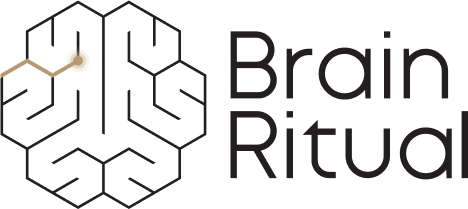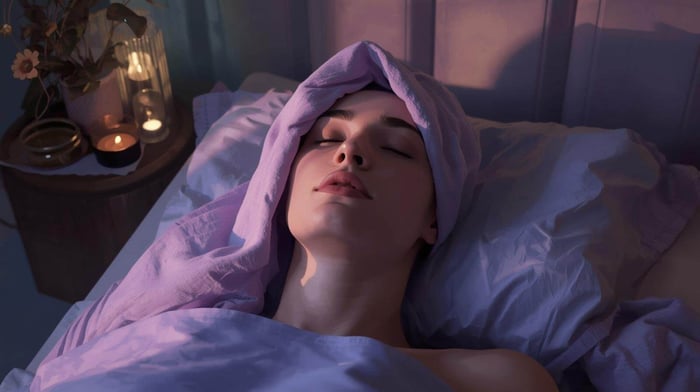Table of Contents
At a Glance
|
You might have heard that a tragus piercing can help with your migraine. After all, it’s a trend that pops up often in online forums and in conversations shared through personal stories rather than direct medical advice. The thought of finding relief from something as simple as an ear piercing is appealing, especially if you’ve already tried many other approaches and found they didn’t work for you.
Currently, there is no scientific proof that tragus piercings can change migraine symptoms. Even so, the idea of a tragus piercing for migraines often comes up when other remedies feel limited. When pain keeps disrupting your life, it’s natural to explore every avenue of support you can, especially natural or alternative ones.
Here, we look at what a tragus piercing is, why some people believe it might help, how it compares to the daith piercing, and what other, more reliable strategies are available for migraine support.
What Is a Tragus Piercing?

The tragus is the small flap of cartilage that partly covers the entrance to the ear canal. A tragus piercing involves placing a stud or hoop through this area.
Most people choose this piercing as a subtle yet eye-catching stylistic choice. In the context of migraine, some believe that stimulating this point could influence pain pathways, similar to acupuncture or pressure-point therapy, where specific spots on the body are thought to affect overall comfort.
These are only theories. So far, tragus piercings haven’t been proven in scientific studies to change migraine symptoms. Even so, the idea continues to attract attention because of how simple and accessible it seems.
Why Do People Think It Might Help Migraines?
Many people have shared online or with friends that their migraines felt easier to manage after getting a tragus piercing. Hearing these stories can be encouraging, especially when you’ve run out of ideas.
One theory is that the piercing stimulates nerves in the ear connected to the vagus nerve (Yuan & Silberstein, 2016), which helps regulate pain and sensory signals. This idea is similar to how some medical devices target the vagus nerve for migraine, though there is no evidence that a piercing stimulates in the same way (Song et al., 2023).

Another explanation may be the placebo effect, which is more powerful than it might sound. Taking action, even something small, can bring a real sense of control and positivity. Believing that you’ve found a new tool can ease stress and shift how the brain processes pain, making symptoms feel lighter even if the piercing itself isn’t the cause.
For some, that’s enough to make a tragus piercing feel worthwhile, especially if it feels meaningful and is relatively harmless. But there are other approaches backed by scientific evidence that don’t carry the risks of infection or discomfort. These include everyday steps like keeping a steady sleep routine, staying hydrated, improving nutrition, and considering migraine-focused supplements such as Brain Ritual®.
Daith vs Tragus Piercing for Migraines
Daith piercing is another type of ear piercing that often gets mentioned in connection with migraine. This piercing goes through the innermost fold of cartilage, known as the crus of the helix. Like the tragus, it became popular because of anecdotal reports that it might ease migraine symptoms. One small survey even found that 47% of people with a daith piercing reported fewer migraine attacks (Cuadrado et al., 2017), though the authors stressed that the results were anecdotal and not scientific proof.
When people delve into the topic of tragus vs daith piercing for migraines, the main question is which one might work better. The truth is that neither has been shown in research to affect migraine in a consistent or reliable way. Daith piercing has been talked about for longer and is more commonly discussed in migraine forums, but that doesn’t mean it is any more effective than tragus piercing.
If you’re curious, the key point to remember is that both daith and tragus piercings are considered alternative approaches, not proven medical options. While stories can be encouraging, they should not take the place of strategies that have stronger scientific evidence behind them.
What Are the Risks to Consider?
Like any piercing, getting a tragus or daith comes with a few minor risks. The most common are ear infection, swelling, and slower-than-usual healing, since cartilage takes longer to recover than softer tissue. Pain during and after the procedure is also likely, and there may be some scarring if the piercing doesn’t heal well. Most of these issues can be managed with basic aftercare, pain relief, or antibiotics if needed.
There’s also the question of permanence. Even if you remove the jewelry later, a small mark may remain. You may also wish to consider the cost of the piercing itself, along with aftercare products or any follow-up treatment if complications occur, though these costs aren’t usually prohibitive.
Migraine specialists generally caution that piercings should not be viewed as a treatment for migraine, since any benefits have not been proven in clinical research.
Other Ways People Manage Migraine Naturally
The main point to keep in mind is that migraines may not improve at all after a piercing. That’s why many people turn to other approaches that can easily be included as a part of everyday life.
Simple changes can often make a difference. Keeping a steady sleep routine, staying well-hydrated, and paying attention to food triggers or eating regular meals can all play a role in how often migraines occur. Spending time in a quiet, darkened environment or reducing screen exposure may also help during an attack. Stress management and light exercise, such as walking or stretching, are other common ways people try to keep symptoms under control.
Nutrition is also important. Certain vitamins and minerals have been linked to migraine support, and paying closer attention to what you eat can be a practical step toward feeling more balanced. Some people also explore approaches like acupuncture or biofeedback (Guirguis-Blake, 2010; Nestoriuc et al., 2008), which have been studied more closely and may offer clearer benefits than a piercing.
Brain Ritual®: Nutritional Support Made Simple
If you’re exploring ways to support migraine more holistically, then nutrition can play a key role. Brain Ritual® was developed as a medical food for the dietary management of migraine, bringing together nutrients that have been studied for their role in brain health and energy support.
A unique feature is the inclusion of D-Beta-Hydroxybutyrate, a form of ketone body that serves as an efficient alternative energy source for the brain. By helping to bypass some of the energy deficits thought to occur during migraine, it supports more stable fuel availability through diet. It also combines 35 further bioactive nutrients, such as magnesium, riboflavin, and CoQ10 with additional nutrients such as L-carnitine, choline, and vitamin D, along with antioxidant vitamins like C and E. Together they help support hydration, nerve function, and balanced energy metabolism. Rather than managing a handful of separate supplements, Brain Ritual® offers these science-backed ingredients in a thoughtfully designed formula that fits easily into daily life.
Brain Ritual® is a medical food for the dietary management of migraine and is not intended to diagnose, treat, cure, or prevent any disease. This content is for informational and educational purposes only and is not intended as medical advice.
Common Questions
Is a tragus piercing scientifically proven to help migraines?
No. While some people share personal stories about migraine relief, there is no clinical evidence that a tragus piercing for migraines has measurable effects. Some theories suggest a link with the vagus nerve, but this has not been proven. Positive experiences are more likely linked to the placebo effect, which can still be beneficial by reducing stress and giving a greater sense of control.
Which piercing is better for migraines, daith or tragus?
Neither has proven benefits. Daith piercing is more widely discussed, but studies have not shown that either works for migraine management.
Tragus piercing for migraines which ear?
There is no difference between the left or right ear. Most people choose based on comfort or appearance, since no evidence shows one side is more effective.
Weight loss tragus piercing for migraines, is there a connection?
Some online claims suggest this type of piercing may influence appetite and weight, but there is no scientific proof. A weight loss tragus piercing for migraines is not supported by research.
What are safer, natural options for migraine support?
Many people focus on everyday steps such as sleep, hydration, and nutrition. Nutrients like riboflavin, magnesium, and CoQ10 have been studied as part of dietary management for migraine.
Final Thoughts
Tragus and daith piercings have become talking points in the migraine community, mainly because of personal stories shared online and between friends. While those experiences matter, there is no scientific proof that either piercing changes migraine symptoms in a reliable way.
Piercings are relatively harmless for most people, and if they feel meaningful, choosing one is a personal decision. Still, it is worth remembering that there are many other approaches with stronger scientific evidence behind them. Paying attention to sleep, hydration, and nutrition can make a difference day to day, and structured nutritional options like Brain Ritual® provide a way to bring key migraine-supporting nutrients into your routine.
Exploring alternatives is part of living with migraine, and being open to what works for you can make the journey feel a little lighter. With balance and the right support, you can build a foundation that helps you feel more steady and less disrupted by migraine.




